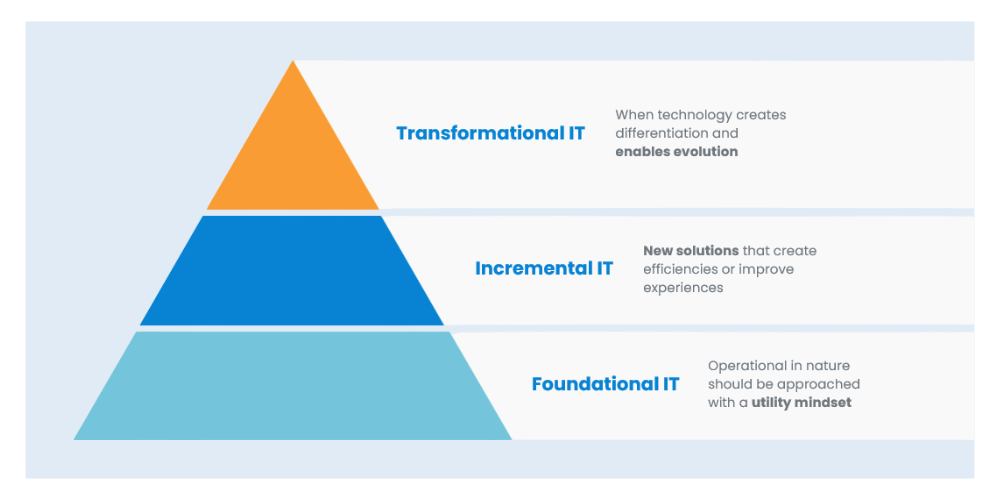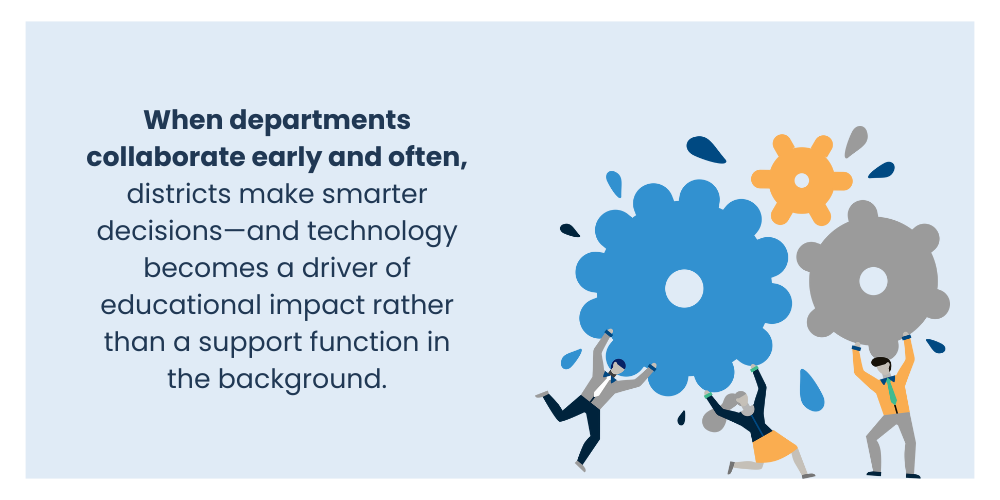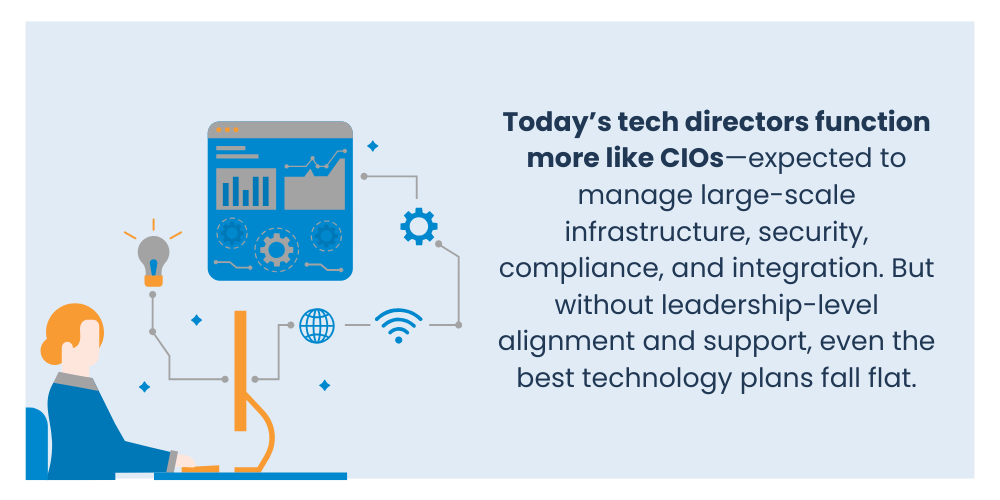Driving Student Outcomes: Strategic Technology Planning for K-12 Schools
Overview
Presented at the IASBO 2025 Conference & Expo, this session focused on helping district leaders reframe how they think about technology—from a collection of tools and vendors to a coordinated strategy that supports learning, security, and financial sustainability.
Whether you attended live or are catching up now, this guide summarizes the key insights to help your team take action.
1. Technology Has Evolved — So Should Planning
School technology has undergone dramatic transformation over the last two decades. What began as computer labs and local servers has become a complex ecosystem of cloud platforms, AI-driven analytics, hybrid learning models, and enterprise-grade cybersecurity needs.
Key takeaway? The structure of leadership must evolve along with the tech itself.
Districts must move away from isolated decision-making and toward an integrated planning process where instructional goals, technology capabilities, and fiscal strategy are developed hand-in-hand.
2. Strategic Technology Planning Starts with Outcomes
Technology decisions shouldn’t start with tools or vendors—they should start with what your district is trying to achieve.
We covered a four-part approach to building a strategy grounded in outcomes:
-
Understand the district’s instructional and operational goals. What outcomes do you want to enable or improve?
-
Conduct a comprehensive technical assessment. Identify gaps, risks, and opportunities across infrastructure, systems, and support models.
-
Align people, processes, and technology. Make sure roles are clearly defined, systems are optimized, and teams are equipped to implement.
-
Translate planning into action. Build a roadmap with clear priorities, timelines, and measurable objectives.
A strong tech strategy connects every device, platform, and dollar to student success.
3. Budgeting Should Be a Strategic Exercise
Too often, tech budgeting is driven by the presence of temporary funding or the urgency of failing equipment. But as ESSER funds dry up and E-Rate Category 2 enters its final year, school districts must reorient their budgeting practices.
Key considerations:
-
Reactive vs. strategic budgeting: Are you chasing the next grant or working toward a long-term vision?
-
Fixed vs. flexible costs: Are you planning appropriately for recurring licenses and support alongside innovation and emerging needs?
-
Cross-department involvement: Budgeting shouldn’t happen in silos. Instruction, operations, IT, and finance must collaborate to ensure investments are meaningful and sustainable.
Smart budgeting isn’t just about controlling costs—it’s about investing with purpose.

4. Cybersecurity Is Everyone’s Responsibility
Cybersecurity is no longer a “tech problem”—it’s a district-wide priority. Threats like ransomware, phishing, and data breaches can shut down operations, inflate insurance costs, and erode community trust.
In our session, we outlined why district leadership must own cybersecurity at a strategic level:
-
Cyber insurance premiums are rising, and carriers are demanding evidence of controls.
-
Response plans must be in place and rehearsed—not just for IT, but for leadership and department heads.
-
Preventative investments are often cheaper and more effective than recovery efforts.
Cybersecurity touches every department—from HR to transportation to curriculum. Leadership buy-in is critical to fostering a culture of accountability and preparedness.
5. Collaboration Is Key
Technology success doesn’t come from IT alone. It requires a culture of collaboration across departments, with a shared understanding of goals, risks, and roles.
Practical steps:
-
Create a cross-functional technology committee that includes leadership from IT, finance, curriculum, and operations.
-
Define shared objectives and metrics so progress can be measured across the organization.
-
Develop clear communication plans to keep all stakeholders aligned.

Final Thoughts
Technology is no longer just a support system—it’s foundational to how instruction is delivered, data is managed, and communities stay connected.
Effective investment in that technology requires a clear strategy, collaborative execution, and a long-term view of value and risk. Let’s make sure your district has the roadmap to get there.
Want Help Navigating Your Journey?
Effective technology investment is more than choosing tools—it’s about aligning strategy, sustaining innovation, and securing the future of your learning environment. Whether you’re just getting started or need support implementing a well-aligned tech strategy, DataServ is here to help.
About DataServ:
- 200+ districts served
- 40 years in education and technology
- 250+ key partnerships
- 70+ expert team members

